S. Evan Townsend's Blog, page 127
March 24, 2013
Sunday Six: Missile Lock
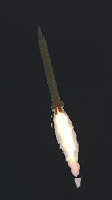 Today's Sunday Six from Chapter Twelve of
Rock Killer
:
Today's Sunday Six from Chapter Twelve of
Rock Killer
:Cole smiled, wrinkling her piggy face. "I've got missile lock."
"Fire a missile," Griffin said. "Let's see what she does."
Cole punched a button on her console and the ship shuddered.
Out the bridge window, they saw the flame of the missile's exhaust as it slung itself at the rock.
Published on March 24, 2013 07:00
March 20, 2013
Useful Links
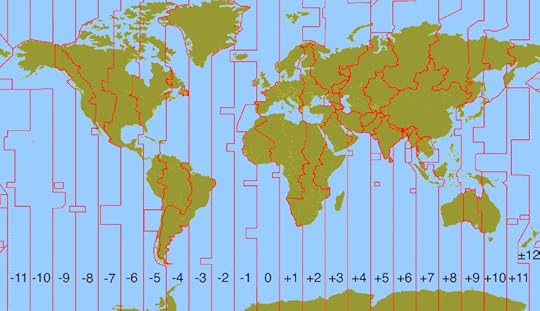 If you're like me when you write, you do a lot of research to make sure you get things accurate. The past two days as I work on the fourth Adepts Novel (still untitled but I'm having some ideas), were research heavy. Today I had to deal with time zones . . . a lot. Horrible things, these time zones. My main character was flying from Tehran, Iran (in 1976, before the revolution) to New Orleans on a military VIP small jet (a "VC-140 Jetstar"). Because of the plane's range, it had to stop at Rhein-Main Air Force Base in West Germany and St. Johns in Newfoundland, Canada, before getting to New Orleans.
If you're like me when you write, you do a lot of research to make sure you get things accurate. The past two days as I work on the fourth Adepts Novel (still untitled but I'm having some ideas), were research heavy. Today I had to deal with time zones . . . a lot. Horrible things, these time zones. My main character was flying from Tehran, Iran (in 1976, before the revolution) to New Orleans on a military VIP small jet (a "VC-140 Jetstar"). Because of the plane's range, it had to stop at Rhein-Main Air Force Base in West Germany and St. Johns in Newfoundland, Canada, before getting to New Orleans.Here was my challenge: the plane left Tehran at about 6:00 P.M. on May 10, 1976. When would it land in West Germany, Canada, and finally New Orleans? I figured each leg would last about 6 hours. So it would land in Germany at about midnight, Tehran time. But what time was that in Germany? And Iran is one of those weird half-hour off time zones. And so is St. Johns (but of course, Germany and New Orleans aren't). This got beyond my ability to easily calculate.
So here's a website I used to figure out when the plane would land at local time: http://www.timeanddate.com/worldclock/ I would figure out what the time was the plane landed at the last place it left from, and use that website to figure out the local time where it landed. Ended up it took off at 6:00 P.M. May 10th and landed at about 6:30 A.M. May 11th.
The other thing I worried about was when it got dark. Was it dark when the plane landed in Germany? (It landed in St. Johns at 2:30 A.M. local time so I was pretty sure it was dark). Was it light when the plane landed in New Orleans? So another website I used was: http://aa.usno.navy.mil/data/docs/RS_OneDay.php But for small towns, rural areas, or anywhere out of the U.S., you have to know the latitude and longitude. That's available various places but I used Wikipedia and checked it with Google Earth.
And this hasn't come up in this story yet, but say you are dealing with money. And you think "My character should earn $100,000 per year in current dollars." But what would that be in 1976? Well, try this website: http://www.bls.gov/data/inflation_calculator.htm which will give you the answer back to 1903. (The answer is $24,508 by the way.)
So, I hope those are helpful in your writing.
Published on March 20, 2013 16:15
March 18, 2013
Editing
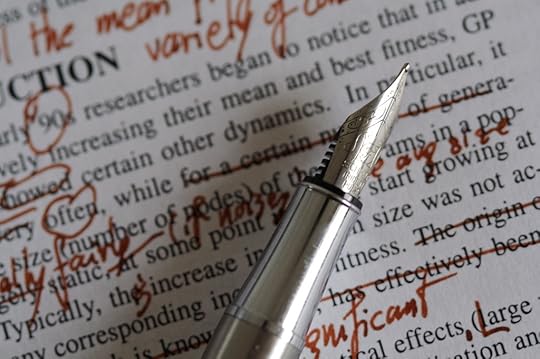 I do a fair amount of freelance work. It's interesting, fun, and helps pay the bills. I also learn a lot (and I'm a born learner). Sometimes it's stressful like when your deadline is looming and people aren't getting back to you (like corporate PR departments). But generally I like it a lot.
I do a fair amount of freelance work. It's interesting, fun, and helps pay the bills. I also learn a lot (and I'm a born learner). Sometimes it's stressful like when your deadline is looming and people aren't getting back to you (like corporate PR departments). But generally I like it a lot.But one thing I don't like is when the person publishing my story edits it a lot. Now editing is an important function. They can catch errors I didn't (I am a lousy proofreader, especially of my own work). But sometimes they change something significantly.
For instance, in a story I wrote for a local magazine, I said of a rancher "His three children, all daughters, have gone separate ways. . . ." The editor changed it to, "His three daughters aren’t involved in ranching. . . ." Okay, it's more concise to say "His three daughters" rather than "His three children, all daughters." But "have gone separate ways" is much more descriptive than "aren't involved in ranching." So, to me, it would have been better to say, "His three daughters have gone separate ways . . ."
On one recent story about a businessman, this same editor massacred my description of his car that he spent a lot of time boasting about. I thought it was a good reflection on his personality. Apparently she didn't.
Having someone edit your work and change it extensively is like having someone tattoo your children. I don't enjoy it. But I guess it's just the price I pay for doing freelance.
Now with my fiction publisher, I work with the editor. And sometimes we have to agree to disagree. But at least she listens to me and she's trying to bring out my style, not bend it to her will.
I guess as long as I'm doing freelance I'm going to have to deal with editing.
Published on March 18, 2013 12:09
March 15, 2013
Blog Neglect
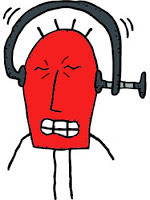 Yes, I've been neglecting this blog. Sorry about that. It's because I've been stressed over a freelance assignment and writing another novel (a fouth in the Adept Series), and trying to sell a car and dieting. So I've been just a wee bit stressed.
Yes, I've been neglecting this blog. Sorry about that. It's because I've been stressed over a freelance assignment and writing another novel (a fouth in the Adept Series), and trying to sell a car and dieting. So I've been just a wee bit stressed.To reward your patience, here's a first-draftish sample from my new novel (which is as of yet untitled):
The door to my room burst open with a loud crack of shattering wood. I sat up to see the blonde woman, Ariel, step in, holding what looked like a small metal box with a handle and a barrel. I knew exactly what it was. Amazingly, I also noticed she was wearing off-white pants and a burgundy blouse that looked silk. Anyone could easily mistake her for a trophy wife except for the very deadly weapon in her delicate hands.
She opened fire, the incredibly rapid gunshots strobe-lighting her grimacing face as the sound crashed through the air.
 I knew if I stayed in that room I would die. Don's room was next door but by the time he got here, she would kill me with that submachine gun. I rolled off the bed away from her, smacking my butt on the window. I hoped the mattress would afford me some protection.
I knew if I stayed in that room I would die. Don's room was next door but by the time he got here, she would kill me with that submachine gun. I rolled off the bed away from her, smacking my butt on the window. I hoped the mattress would afford me some protection.The gun stopped firing and I assumed she was walking forward to get a clear shot at me. There was no escape. I didn't dare teleport out of the room for fear of materializing in another object. That would be both deadly and spectacular as two objects tried to occupy the same space. I could teleport outdoors but then I'd fall 22 floors to my death. If only I could teleport with a blanket, I thought ruefully. I could use it as a flying carpet.
I could put up a protection spell but unlike her, I couldn't move with it up and eventually she'd wear it down.
Then I noticed the window was cracking. She'd hit it a few times in the fusillade of bullets she'd fired at me.
I heard three gunshots, deeper but more distant. The machinegun's staccato voice range out again, but seemed to be pointed away from me. I looked over the bed in time to see her shooting at Don in the hallway, his large black pistol in his hands pointed at her.
I decided to try and tackle her even though that didn't work in San Francisco when she attacked Vaughan. It was the only thing I could think of.
I stood up and jumped on the bed just as Don crumpled to the floor, red stains growing on his white shirt. Ariel turned with alarming swiftness and, seeing me, shot at me. Everything seemed to happen in slow motion. I saw the muzzle flash of her weapon and the smoke coming from its barrel, the shell casings being ejected in a rain of brass to land on the carpet. I felt the bullets enter my body in my torso and the pain was incredible. I fell backward off the bed and against the already weakened window. It shattered and I started to fall out. I grabbed at the curtains, the only thing I could reach, and for a long moment I hung over the abyss below me, my feet dangling in the air.
Then the curtains pulled off the rod and I fell.
Published on March 15, 2013 12:49
March 10, 2013
Sunday Six: Radio Detection
Today's Sunday Six comes from Chapter Ten of
Rock Killer
:
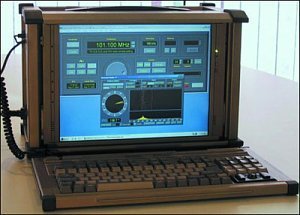 Trudeau was bent over his radio computer. He scanned the spectrum up and down with the RF gain on maximum. He'd heard some Russian (Mars? he wondered), a lot of static, but nothing that sounded like SRI transmissions. He wasn't too worried. He had a week, at least. It was just that Griffin was breathing down his neck to find the asteroid's transmissions.
Trudeau was bent over his radio computer. He scanned the spectrum up and down with the RF gain on maximum. He'd heard some Russian (Mars? he wondered), a lot of static, but nothing that sounded like SRI transmissions. He wasn't too worried. He had a week, at least. It was just that Griffin was breathing down his neck to find the asteroid's transmissions.
 Trudeau was bent over his radio computer. He scanned the spectrum up and down with the RF gain on maximum. He'd heard some Russian (Mars? he wondered), a lot of static, but nothing that sounded like SRI transmissions. He wasn't too worried. He had a week, at least. It was just that Griffin was breathing down his neck to find the asteroid's transmissions.
Trudeau was bent over his radio computer. He scanned the spectrum up and down with the RF gain on maximum. He'd heard some Russian (Mars? he wondered), a lot of static, but nothing that sounded like SRI transmissions. He wasn't too worried. He had a week, at least. It was just that Griffin was breathing down his neck to find the asteroid's transmissions.
Published on March 10, 2013 07:00
March 6, 2013
Ten Things I Know to be True
Just saw someone post a link to their blog with the teaser, "Ten things I know to be true - for me." So I decided to do a list of ten things I know to be true. Period.
1) F=ma, P=mv, (and a lot of other things, at least in Newtonian space where most of us live unless you're on a spaceship going almost the speed of light, then things get weird).
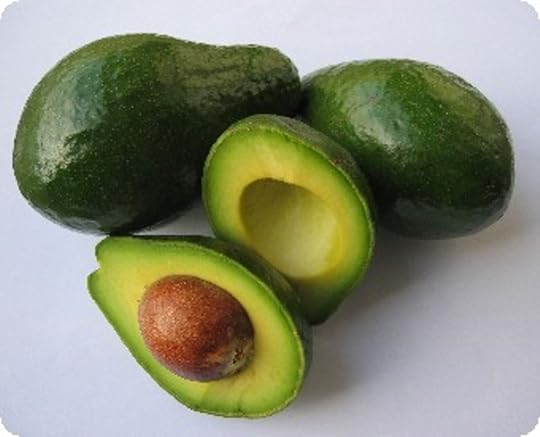 2) Economics works. Raise the price of something and people will want less of it. Lower the cost, and they will want more. That is one reason crime surged in the 1960s and '70s: we lowered the cost of committing crime by turning justice from punishment/incarceration to "rehabilitation." Economics is also why avocados are nearly always available at the grocery store despite a short shelf life and very specific growing conditions needed.
2) Economics works. Raise the price of something and people will want less of it. Lower the cost, and they will want more. That is one reason crime surged in the 1960s and '70s: we lowered the cost of committing crime by turning justice from punishment/incarceration to "rehabilitation." Economics is also why avocados are nearly always available at the grocery store despite a short shelf life and very specific growing conditions needed.
3) Some people think feeling acceleration is fun. Some people are scared by it. The former group likes roller coasters and driving fast. The latter group drives their Volvo SUVs at 40 mph in the fast lane and come to a full and complete stop before turning. I live in a town full of the second group.
4) The corporate world demands conformity and innovation at the same time. If you can pull that off, you can make a lot of money. I can't.
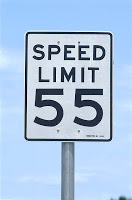
5) Speed limits in the United States are generally not set for maximum safety, but maximum revenue generation by writing tickets. This means most of them are about 10 to 15 mph too slow for safety (yes, higher speed limits can be safer).
6) Caffeine is a legal addictive drug. Thank heavens.
7) I have no idea how women wear high heels, but I'm sure glad they do (yes, I stole that one).
8) Flying these days has to be one of the worst experiences possible that people voluntarily do short of joining the military.
9) No matter what laws are passed, criminals will not obey them.
10) There is a cost to everything. The trick in life is to figure out if the cost is worth the benefit. People how don't pay the cost themselves (e.g., politicians) usually exaggerate the benefit while underestimating the cost.
1) F=ma, P=mv, (and a lot of other things, at least in Newtonian space where most of us live unless you're on a spaceship going almost the speed of light, then things get weird).
 2) Economics works. Raise the price of something and people will want less of it. Lower the cost, and they will want more. That is one reason crime surged in the 1960s and '70s: we lowered the cost of committing crime by turning justice from punishment/incarceration to "rehabilitation." Economics is also why avocados are nearly always available at the grocery store despite a short shelf life and very specific growing conditions needed.
2) Economics works. Raise the price of something and people will want less of it. Lower the cost, and they will want more. That is one reason crime surged in the 1960s and '70s: we lowered the cost of committing crime by turning justice from punishment/incarceration to "rehabilitation." Economics is also why avocados are nearly always available at the grocery store despite a short shelf life and very specific growing conditions needed.3) Some people think feeling acceleration is fun. Some people are scared by it. The former group likes roller coasters and driving fast. The latter group drives their Volvo SUVs at 40 mph in the fast lane and come to a full and complete stop before turning. I live in a town full of the second group.
4) The corporate world demands conformity and innovation at the same time. If you can pull that off, you can make a lot of money. I can't.

5) Speed limits in the United States are generally not set for maximum safety, but maximum revenue generation by writing tickets. This means most of them are about 10 to 15 mph too slow for safety (yes, higher speed limits can be safer).
6) Caffeine is a legal addictive drug. Thank heavens.
7) I have no idea how women wear high heels, but I'm sure glad they do (yes, I stole that one).
8) Flying these days has to be one of the worst experiences possible that people voluntarily do short of joining the military.
9) No matter what laws are passed, criminals will not obey them.
10) There is a cost to everything. The trick in life is to figure out if the cost is worth the benefit. People how don't pay the cost themselves (e.g., politicians) usually exaggerate the benefit while underestimating the cost.
Published on March 06, 2013 09:00
March 5, 2013
World Castle Blog Hop
Get ready for the Blog HOP into Spring event with the authors of World Castle Publications! Lots of prizes to be had! Discover some great authors! Find a book or two to add to your To Be Read list! And did I mention PRIZES! Wanna play? Just send an email to promorobyn@gmail.com and label the subject BLOG HOP. You'll be entered as a contestant and eligible to win one of three great gift packs in April! See you all there!
Published on March 05, 2013 10:09
March 3, 2013
Sunday Six: Emergency
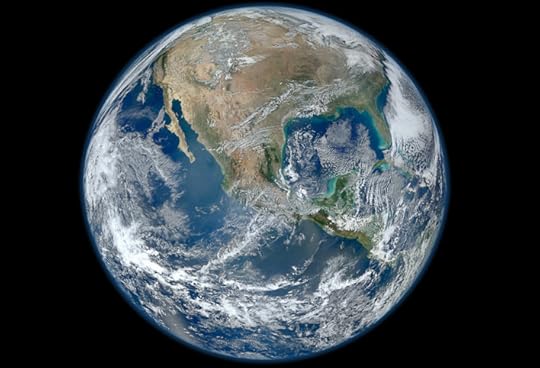 Today's Sunday Six comes from Chapter Nine of
Rock Killer
:
Today's Sunday Six comes from Chapter Nine of
Rock Killer
:The rear Masuka drive had failed and the drive techs didn't know when it'd be up again. Bente ordered the mass driver to full power, which wasn't much more than it normally gave.
The rock was going to miss Earth orbit if she didn't act quickly and correctly.
She yawed the rock, which moved too slowly, and accelerated toward the Earth. This gave her some breathing space. She used the computer to project a braking maneuver using the Earth's gravity.
Published on March 03, 2013 07:00
February 28, 2013
Manipulating Netflix
 I've been on Netflix for going on eleven years. Yes, I apparently like it. But over the years I've learned some things. Netflix will "throttle" you if you send back too many discs in a period of time that is undefined (so is "too many"). What this does is keeps you from getting new releases. It costs, I've read, Netflix $1 to send out a disc and have it come back (I assume postage both ways, the package, handling). So they want to minimize that expense and "throttling" (not their term) is the way to do it.
I've been on Netflix for going on eleven years. Yes, I apparently like it. But over the years I've learned some things. Netflix will "throttle" you if you send back too many discs in a period of time that is undefined (so is "too many"). What this does is keeps you from getting new releases. It costs, I've read, Netflix $1 to send out a disc and have it come back (I assume postage both ways, the package, handling). So they want to minimize that expense and "throttling" (not their term) is the way to do it.So here's what you do. You limit how many movies you watch. When I was on the three-disc at home plan, I never watched more than two movies a week. When (because of their price hike, mostly) I switched to two discs at home plan, I only sent back three discs every two weeks. I alternate: one disc one week, two discs the next.
Now, we all want new releases, right? Unfortunately, Netflix due to a content deal (to get more streaming content) told studios that they won't release new releases until four weeks after they go on sale. Yes, it sucks. For instance, I am hoping to get Skyfall on the 12th of March, four weeks after it was available in stores to buy (and probably rent elsewhere). New releases usually come out on Tuesday. What you want to do is get a disc to them on Monday before the new release. For me, that means sending Saturday (until mail stops on Saturday in August, then it'll probably be Friday).
This is very important: if there's only one new release, send only one disc to arrive Monday. If you need to send a second disc back, send it so it arrives Tuesday at the earliest. If there's two (or more) new releases, you can send two discs to arrive Monday. This probably won't get you throttled if you've been judicious in your disc returning.
Now this means my discs sit around a lot. This is a "two movie week" (as I call them) so we needed to watch two discs to send back this weekend. But we watched them last Saturday and last Tuesday. So one is going to sit around for a week after being watched, the other for at least 5 days. But this keeps you from being throttled. Yes, I know Netflix is manipulating me. But I like having a queue with the movies I want to watch and having them delivered to my house.
So, that's all I know about Netflix. I've heard rumors of streaming throttling (slowing down the download or lowering the quality) but I don't stream enough to notice.
Published on February 28, 2013 12:59
February 27, 2013
Writing Lessons: Show and Tell
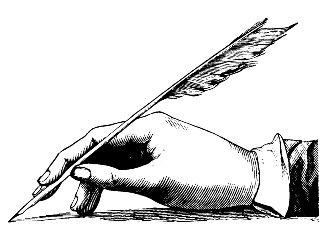 This part three of a continuing series of writing lessons. Parts one and two were earlier on this blog.
This part three of a continuing series of writing lessons. Parts one and two were earlier on this blog.They always tell beginning writers to "show, not tell." I'm slower than most and it took me a long time to figure out what that meant. At the risk of sounding stupid, it means: show your reader things don't tell them things.
For example, read the following passage.
A man walked into the bar. He was tall and slim with broad shoulders, dark wavy hair and intelligent blue eyes. He was dressed well in a business suit and a red power tie.
Okay, that's not too bad. You should have a picture of this man in your head. But compare and contrast that to the following:
The man strode on long legs into the bar. His quick blue eyes surveyed the scene as he looked for his friend. He carried his tall frame confidently toward the bartender, adjusting his red power tie and pulling on the single cuffs of his starched dress shirt. His shoulders filled out his expensive dark suit which complimented his dark wavy hair.
See the difference? This accomplishes two things: one, the story doesn't come to a dead stop to describe the man. The narration can continue (he walked to the bartender, he looked for his friend) while you are describing him. (If I were writing a longer passage I would leak out these details more slowly than I did here). And two, you can add more detail without getting boring (e.g., single cuff, starched shirt, confidently).
Here's an excerpt form a novel I haven't finished (barely started):
"What are you doing home," Marilyn asked Mike as she came in, her backpack over her shoulder making her shirt ride up more, exposing more of her bare, flat tummy over her low rise jeans."How was school?" Mike asked from the couch where he was watching the apartment's T.V.Marilyn fixed him with her green eyes, her long dirty blonde hair hanging down her back to almost the end of her shirt. "Don't change the subject, mister."
Mike turned off the T.V. with the remote and looked at her. "I got fired.""What?" . . . She sat at the end of the couch and curled one long leg underneath her. Okay, what have we learned about Marilyn while the story was proceeding: she's probably a student (who else carries a backpack?), she's tall (long leg), thin (flat tummy), with green eyes and long dirty blond hair. And we didn't have to read a paragragh of description to learn it and didn't stop the narrative dead cold with that paragraph.
"Show, don't tell" works with things other than descriptions of people. For example, you can tell your reader "Joe died" or you can show your reader: "Joe slowly crumpled to the ground, a questioning look on his visage with his eyes going dark as he dies."
Published on February 27, 2013 08:00



